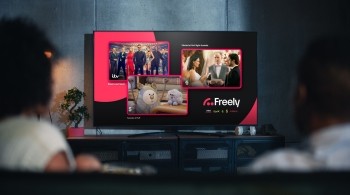Buying a TV isn’t as simple as walking into a shop or going online and saying: “I like the look of that one”. As you’re spending your hard-earned money on something that you can expect to look at every day for a number of years, you’re going to want to make sure that the TV you end up buying is the right one for all of your needs.
When it comes to purchasing a new television, the sheer number of specifications and acronyms can be overwhelming. Understanding these technical details, however, is crucial to making an informed decision. This guide will break down the key specs you should consider, ensuring you select a TV that perfectly suits your needs and preferences.
When it comes to technology there is plenty of acronyms and even more techy language that may be difficult to understand.

What specifications should I look for in a TV?
First consider what you will use your TV for
First and foremost, you’re really going to need to know what it is you’re going using your TV for.
This could be anything from immersing yourself in true cinematic quality to watch the best films, catching all the best (and unmissable!) sporting moments and gaming to keeping the kids entertained, following along to cooking shows and everything in between. Once you’ve got that covered then you can really start to unpack what you need you television to have in terms of screen resolution and even size.
Smart TV features
Modern TVs often come with built-in smart capabilities, allowing you to stream content, browse the internet, and control your home devices. Consider factors like:
- Featured apps and app support: Ensure the TV supports your favourite streaming apps.
- Voice control & AI integration: Voice assistants can make TV control even easier.
Want more info? Check out our guide to Smart TVs!
Screen size and placement
Screen size is measured diagonally in inches, the size of your TV should align with your viewing distance and room size. A larger screen generally offers a more immersive experience, but consider your space limitations – always try to measure the space you want with a tap measure to make sure the TV can fit where you might want to put it, and you can visualise just how big the screen would be.
Tip: Consider your room's lighting. Both natural light and artificial lighting can affect your viewing experience. And don't forget about power outlets if you don’t want wires and extensions everywhere!
Screen resolution
Screen resolution determines the number of pixels on the screen, which in turn can impact image clarity and detail. Common resolutions include: HD, 4K/UHD, 8K.
Also referred to as ‘panel technology’, TV technology significantly impacts its picture quality and performance. Some of the most common on the market include:
- LED – LED TVs are backlit by LEDs (Light-Emitting Diodes). This means that they display deep blacks and saturated colours which really help to make content pop. They’re pretty energy efficient too.
- Mini LED – Mini LED TVs feature thousands of tiny LEDs to create a stunning contrast, perfect for dark scenes and bright highlights. The enhanced contrast is perfect for movies, gaming, and sports.
- OLED (Organic Light Emitting Diode) – Self-illuminating pixels delivering perfect blacks, vibrant colours, infinite contrast ratio, and wide viewing angles, for an immersive experience.
- QLED – Quantum dot technology (hence the Q!) enhances colour and brightness, ideal for well-lit rooms. It provides enhanced colour volume and brightness.
Read more: What's the best TV technology?
Refresh rate
Want a smooth, crystal-clear picture? Then you will definitely want to check and compare refresh rates. A higher refresh rate means a smoother picture, especially for fast-paced action.
The faster the refresh rate the better. Generally speaking, 60 Hertz (Hz) is the standard and fine for casual viewing like watching your favourite TV shows and films, while 120Hz or more is ideal for gaming and sports, offering a more fluid and responsive viewing experience.
HDMI and other TV connections
Before you buy a TV, it's always worth checking if it’ll be compatible with other tech like soundbars and speakers, gaming consoles, Blu-Ray players and even how many connectivity ports like HDMIs there are. Gamers especially might want an HDMI 2.1 port, which supports a refresh rate of up to 120Hz and more.
Sound quality
While picture quality is often the primary focus, sound quality is equally important. While there are ways to improve your TV’s sound, also consider looking for TVs with powerful speakers, for a decent audio experience without external speakers, or Dolby Atmos for that immersive sound quality, that makes you feel like you’re in the cinema.
By carefully considering these specifications, you can select a TV that delivers an exceptional viewing experience. Remember to balance your budget with your desired features and prioritise the aspects that matter most to you, whether it's stunning picture quality, immersive sound, or smart capabilities.
Need some more help with getting the most out of your current, or new TV? Check out our product and tech guides for allll the answers to your frequently asked questions! Ready to make a purchase? Check out the full range of Freely TVs and discover the newest streaming service that everyone's been talking about!



